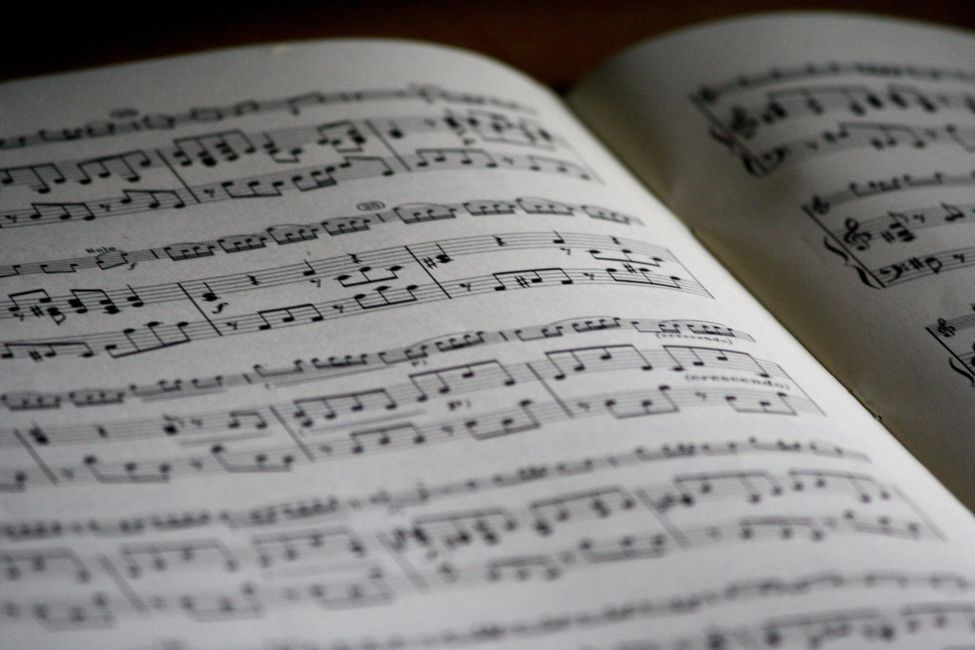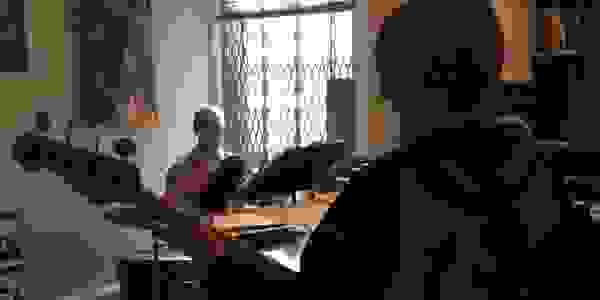
MUSIC THERAPY
Why a Music Therapist should be interested in the nature and applications of the modes?
As a creative jazz musician and performer, my earlier studies in music were devoted to modes. When I first studied the modes, I learned them in a mechanical manner. Harmony class did not discuss the type of feeling quality the various modes could produce. I knew theoretically the difference between each mode and could distinguish sound differentials between the major and minor modes but I did not play the modes from my heart.
I started to get more in touch with my feelings when I studied art. At the same time that I explored myself with art, the way I felt about music started to change. I began to compose more, writing very differently than ever before.
The compositions I began to write were derived from certain feelings I had been experiencing and were not merely exercises in counterpoint. I came back to the modes and began to relate the moods and feelings I had to the diatonic major modes. I had found that different modes were clearly more suitable for certain moods than others. I then began to experiment with the diatonic modes derived from the melodic and harmonic minor scales, symmetrical diminished and pentatonic scales.
Learn More
Click below to keep up to date with Frank Wagner's performances and news in regards to Jazz and stage presence in the United States on his musician webpage.
The greatest number of flats that can be applied to a modal scale on a particular tone will produce the “darkest” mode, the Locrian. Subtracting flats (and then adding sharps) in diatonic signature order will produce an arrangement of modes from “darkest” to “brightest”. The Dorian mode is in the middle point and sets the norm. Within this related order a flexible set of modes is at the music therapist’s disposal, and definite control of these scale formations with their inherent qualities is possible.
The seven modes do indeed, I have found, evoke specific moods. There are a number of ways a music therapist or other creative art therapists could utilize Modal Images in a clinical setting.

Drawing Images Through Music
At the beginning of each session before the clients arrive, lay art supplies out in the middle of the table for the group. The group should be able to choose between pastels, crayons, water colors, colored pencils, charcoal, oil paints, various width paint brushes, colored paper and different sizes of drawing paper. Aside from the art supplies that the clients can freely choose from, have musical instruments handy if anyone wishes to play music. A mixture of percussion instruments such as claves, maraccas, wind chimes, tambourines, a rainstick, a triangle, congo and bongos.
Before the music begins, ask the group to relax and let the music guide their imaginations to conjure up images. If anyone does not feel like drawing, or if they finish before the music ends, encourage them to pick up an instrument and play along with them.
The therapist has the choice to pick what mood he or she would like to play. If the group is restless, Lydian or Aeolian might be a good choice or if the group is depressed, Mixolydian, Phrygian or Ionian might be a desirable choice. The therapist can either choose to play the mode once (average length is ten minutes for each mode) or twice with the same mood. Or the therapist may want to play several moods. For example, Ionian, Aeolian and Locrian, thus would create three separate drawings. Please remember to leave time for processing. I recommend twenty minutes if the group is one hour. Feel free to experiment.
Another way Modal Imagery can be used is in conjunction with Guided Imagery. The therapist or “guide” accompanies the client (“traveler”) through an inner journey of imagery; asking questions and encouraging dialogue that arises. The therapist should carefully calibrate what mood or moods, and type of emotional catharsis is needed.

REFERENCES

Hevner, K. (1935)
The Affective Character of the Major/Modes In Music. The American Journal of Psychology, Vol 47 (1) 103-118
Hevner, K. (1936)
Environmental Studies of the Elements of Expression In Music. The American Journal of Psychology, Vol (48), 246-268
Hevner, K. (1937)
The Affective Value of Pitch and Tempo In Music. The American Journal of Psychology, Vol (49), 621-630
Zuckerkandl, V. (1956)
Sound and Symbol: Music and The External World. Princeton, New Jersey. Princeton University Pre What Every Music Therapist Needs To Know:
Music therapy links

Some links worth viewing
- www.soundingjoymt.org
- www.therebeccacenter.org
- www.Steinhardt.nyu.edu/Nordoff
- https://hvcats.org/about/
- http://www.singforyourself.net/
- http://www.soundhealthstudio.com/
- http://www.musictherapyonline.com/
- https://www.musictherapy.org/
- https://www.molloy.edu/academics/graduate-programs/graduate-music-therapy
- https://www.brooklynmusicschool.org/music-therapy
- https://www.mountsinai.org/locations/union-square/services/music-therapy
- https://www.goodtherapy.org/learn-about-therapy/types/music-therapy
- http://www.ctmusictherapy.com/
- www.montclair.edu/academic/music-therapy
- www.Touchofmusic.com
- www.jonehinger.com
- www.autisimspeaks.org
Modal Moods
New York, NY 10025 US
Copyright © 2020 Modal Moods - All Rights Reserved.
fjaszy@gmail.com